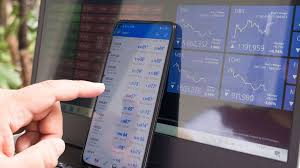
CFDs: The Risks and Rewards of Contract for Differences
CFD trading is a popular form of trading that is gaining momentum in the investment world. It is not new, but so many people are still unaware of what it involves, how it works, and its benefits. CFD trading is a type of derivative that is used by investors and traders to speculate on the price movement of different assets such as stocks, commodities, currencies, and indices. In this article, we will take a deep dive into the basics of CFD trading, explaining what is cfds, how it works, and what you need to know before you start.
What is CFD Trading?
CFD stands for Contract for Difference. It is a financial instrument that allows traders to trade on the price movement of various assets without owning them. A CFD holder agrees with a broker to exchange the difference in the price of a financial instrument between the opening and closing positions of a trade. It means that instead of owning a share or a commodity, you own a contract, which represents these assets’ value.
How does CFD Trading Work?
CFD trading is unique in that you can open a position for a less amount than the actual asset value. The leverage provided by the broker helps traders gain exposure to assets with smaller amounts of capital. This feature allows traders to take larger positions but also increases their risk level. CFD trading also allows traders to go short and long on assets. You can buy or sell a CFD depending on whether you are bearish or bullish on the underlying asset.
What are the Benefits of CFD Trading?
CFD trading comes with many benefits. Firstly, it provides access to a wide range of markets, including stocks, commodities, indices, and currencies, allowing traders to diversify their investment portfolio. Secondly, CFD trading offers higher leverage than other trading instruments, which can be useful for experienced traders looking for larger positions. Lastly, CFD trading is accessible to traders from different backgrounds, with various budgets.
What are the Risks of CFD Trading?
Like with any investment, CFD trading comes with risks. The first risk is high volatility. The leveraged nature of CFD trading means that even small price movements can result in significant profits or losses. Secondly, CFD trading fees, such as overnight financing charges, can add up, eating into your profits and margins. Lastly, CFD trading is a trading technique that requires research, experience, and technical analysis to predict future price movements.
How to Start CFD Trading?
Starting CFD trading requires a good trading platform and a reliable broker. Many reputable brokers offer CFD trading services, such as IG, EToro, Plus500 and Interactive Brokers. Ensure that you open a demo account before you invest in real CFD trading to practice your trading strategies and assess the risks.
Conclusion:
In conclusion, CFD trading is a fascinating investment technique that offers traders great opportunities to make profits. With higher leverage, diversified assets, and the ability to go long or short, CFD trading is a popular way to trade in today’s market. However, remember to assess the risks all investments come with before venturing into trading CFDs. We hope that this article has provided you with a comprehensive understanding of what CFD trading is, how it works, and the pros and cons of investing in this trading instrument.